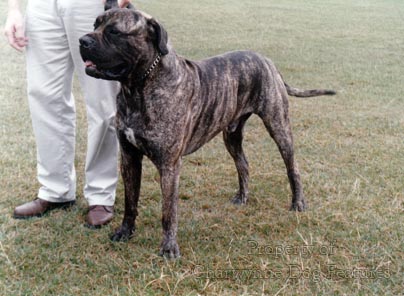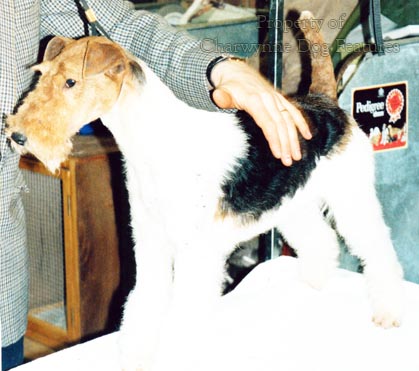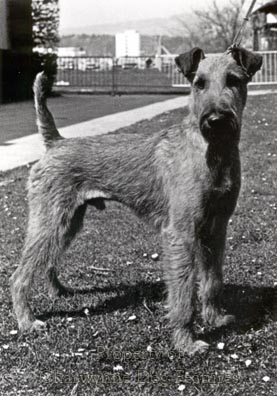824 BREEDING KNOWLEDGE
BREEDING KNOWLEDGE
by David Hancock

 In my experience, the greatest danger to far too many English breeds of dog, sporting breeds many of them, comes, not from inexperienced newcomers bursting to learn and anxious to learn more, but from the 'thirty years in the breed' brigade. So often the latter have not thirty years experience but one year's experience repeated thirty times. They have fixed views, quite often outdated views but even worse than that, a lack of knowledge. What is strange is their willingness to expose their compounded ignorance. At a Bullmastiff breed seminar a decade or so ago, a breed elder, and widely-requested judge - but not, thank God, a breeder! gave the view that the only effective night-dog could be one well over 100lbs, stating that a lighter dog could never knock and then hold a man down. The most effective night-dogs were however Thorneywood Terror, Osmaston Grip and Osmaston Daisy, each weighing around 90lbs. These dogs had muscular power not needless bulk. They were more like bull-lurchers than Mastiffs - a throwback like the Bullmastiff Wyburn Nightcap could never please today's judges, who perversely still claim to value the night-dog heritage. They no longer respect the original function of the breed - a sure sign of approaching doom!
In my experience, the greatest danger to far too many English breeds of dog, sporting breeds many of them, comes, not from inexperienced newcomers bursting to learn and anxious to learn more, but from the 'thirty years in the breed' brigade. So often the latter have not thirty years experience but one year's experience repeated thirty times. They have fixed views, quite often outdated views but even worse than that, a lack of knowledge. What is strange is their willingness to expose their compounded ignorance. At a Bullmastiff breed seminar a decade or so ago, a breed elder, and widely-requested judge - but not, thank God, a breeder! gave the view that the only effective night-dog could be one well over 100lbs, stating that a lighter dog could never knock and then hold a man down. The most effective night-dogs were however Thorneywood Terror, Osmaston Grip and Osmaston Daisy, each weighing around 90lbs. These dogs had muscular power not needless bulk. They were more like bull-lurchers than Mastiffs - a throwback like the Bullmastiff Wyburn Nightcap could never please today's judges, who perversely still claim to value the night-dog heritage. They no longer respect the original function of the breed - a sure sign of approaching doom!
I believe today's Foxhound breeders have learned the lesson of the 'shorthorn' period, at the end of the 19th century and in the early years of the last one, when 'great bone' was strangely desired. But if Honiton hound-show judges are never going to examine mouths 'because they just know they are all good', stand by for inbred jaw construction problems in these hounds. If no Peterborough hound-show judge is going to inspect the feet of hounds, stand by for inbred foot and pastern problems. How on earth can any breeder improve his line if judges decline to conduct a thorough physical examination and merely assume that faults don't exist. Objective judgements can contribute a great deal to breeder knowledge. Knowledgeable judges improve breeding stock and influence breeding choices.
I have considerable worry over an epidemic of upright shoulders and short upper arms in breeds of sporting terriers. (And some breeders who use show stock in their line of working terriers are courting disaster.) Show critiques have also highlighted the prevalence of upright shoulders in 11 other breeds and short upper arms in 10 breeds. Judges have also lamented the 'choppy' action in Alaskan Malamutes and 'terrier movement' in Beagles. The latter comment by a judge is in itself worrying; is it becoming the expectation to see a marked lack of extension in terrier breeds? Is an abbreviated front action becoming a terrier characteristic? Today's show Fox and Irish Terriers demonstrate very limited forward reach. No working terrier could triumph with such an affliction.
No doubt I will be told to mind my own business because I am not 'in' the breeds I refer to. But perhaps a more valuable comment than 'What's he know?' (or the last resort of the out-argued fancier 'how many litters has he bred?') is the more intelligent one: 'Is he right?' 'Mind your own business' is negative and often the sign of an insecure, closed mind - one lacking knowledge. 'Leave our breed to us' is defensive and does nothing to open up a breed to informed, constructive comment. Neither present a healthy option for a breed whose fanciers wish to grace a new millennium with ambition for their breed. Unless we are very careful harmful faults are going to become accepted as breed characteristics. There should be no such thing as 'terrier movement' only sound movement, however short the dog's legs are. No dog should be forced to take three strides when one will do. Every sporting breed benefits from good forward and rear extension; even a small terrier should be able to take sizeable steps and not cover ground in a blur of shortened strides. The latter is extremely tiring however enthusiastic the dog.
The late Tom Horner, a distinguished terrier judge, wrote in his 'All About the Bull Terrier': "Dogs with really good shoulders and good length of upper arm hardly ever go wrong in front, whereas dogs with short upper arms and short steep shoulder blades with a wide angle between the two bones frequently do..." The Staffordshire Bull Terrier expert, HN Beilby, wrote in his book on the breed: "Front legs may be well boned and muscled, but if they are coupled with badly placed shoulders they lose a considerable proportion of their usefulness and efficiency." This of course applies to all breeds; I do hope that whether the advice comes from within breeds or without, we can get back to breeding dogs with 'useful, efficient' front legs, just as Beilby recommends. He had over thirty years in the breed...but he had knowledge! Successful breeding relies, not just on repeating the past, not on hunches or on the casual recycling of old genes, but on knowledge, preferably painstakingly acquired by the breeder.